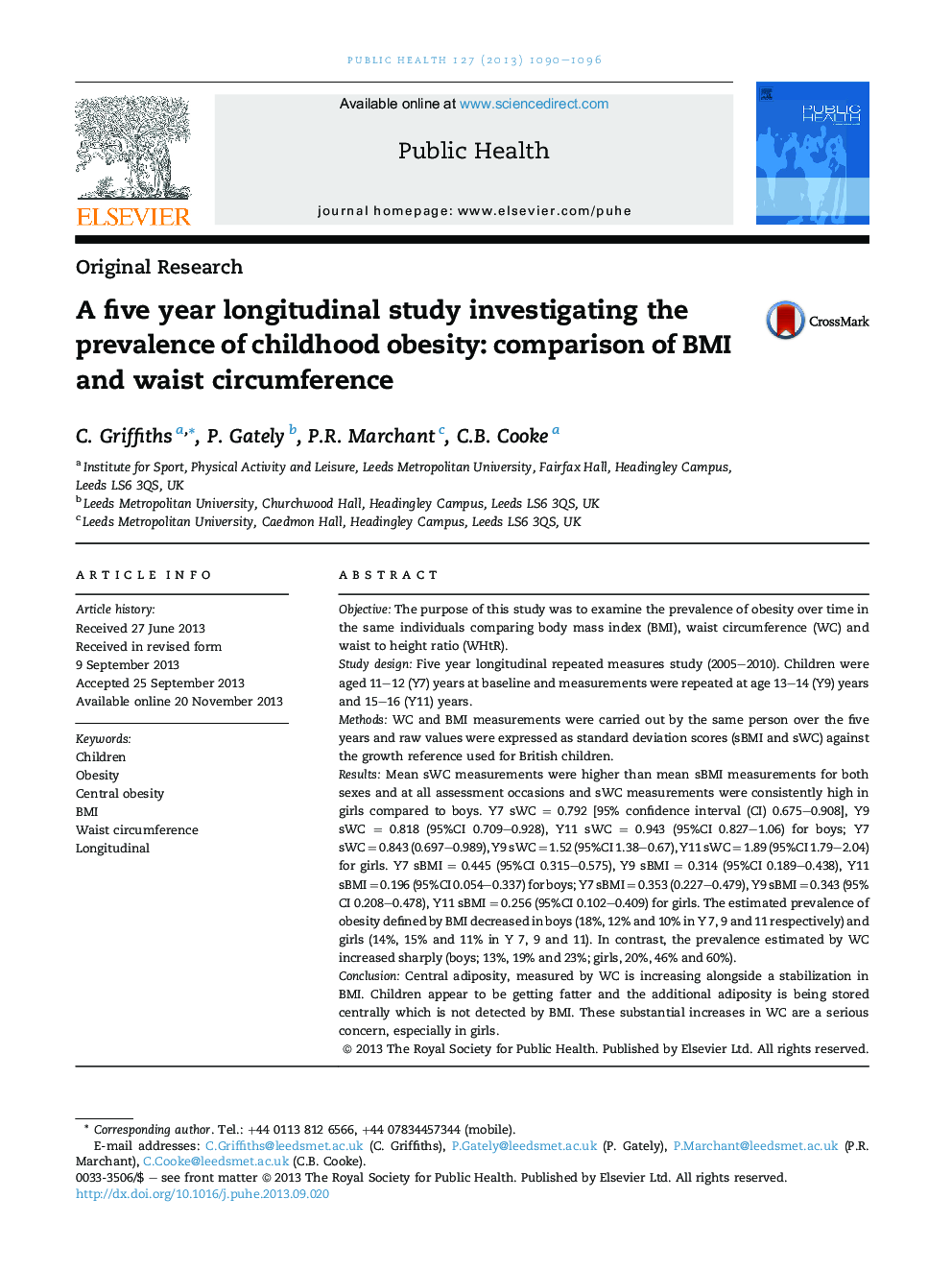| Article ID | Journal | Published Year | Pages | File Type |
|---|---|---|---|---|
| 1087676 | Public Health | 2013 | 7 Pages |
ObjectiveThe purpose of this study was to examine the prevalence of obesity over time in the same individuals comparing body mass index (BMI), waist circumference (WC) and waist to height ratio (WHtR).Study designFive year longitudinal repeated measures study (2005–2010). Children were aged 11–12 (Y7) years at baseline and measurements were repeated at age 13–14 (Y9) years and 15–16 (Y11) years.MethodsWC and BMI measurements were carried out by the same person over the five years and raw values were expressed as standard deviation scores (sBMI and sWC) against the growth reference used for British children.ResultsMean sWC measurements were higher than mean sBMI measurements for both sexes and at all assessment occasions and sWC measurements were consistently high in girls compared to boys. Y7 sWC = 0.792 [95% confidence interval (CI) 0.675–0.908], Y9 sWC = 0.818 (95%CI 0.709–0.928), Y11 sWC = 0.943 (95%CI 0.827–1.06) for boys; Y7 sWC = 0.843 (0.697–0.989), Y9 sWC = 1.52 (95%CI 1.38–0.67), Y11 sWC = 1.89 (95%CI 1.79–2.04) for girls. Y7 sBMI = 0.445 (95%CI 0.315–0.575), Y9 sBMI = 0.314 (95%CI 0.189–0.438), Y11 sBMI = 0.196 (95%CI 0.054–0.337) for boys; Y7 sBMI = 0.353 (0.227–0.479), Y9 sBMI = 0.343 (95%CI 0.208–0.478), Y11 sBMI = 0.256 (95%CI 0.102–0.409) for girls. The estimated prevalence of obesity defined by BMI decreased in boys (18%, 12% and 10% in Y 7, 9 and 11 respectively) and girls (14%, 15% and 11% in Y 7, 9 and 11). In contrast, the prevalence estimated by WC increased sharply (boys; 13%, 19% and 23%; girls, 20%, 46% and 60%).ConclusionCentral adiposity, measured by WC is increasing alongside a stabilization in BMI. Children appear to be getting fatter and the additional adiposity is being stored centrally which is not detected by BMI. These substantial increases in WC are a serious concern, especially in girls.
